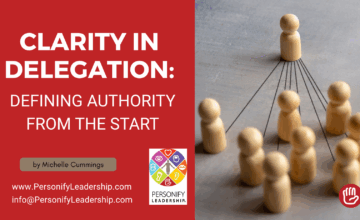Leading with the Whole System in Mind
- Jul 12, 2025
- By personifyadmin
- In Newsletters
- 0 Comments
Every organization is made up of interconnected parts: departments, teams, and individuals that depend on each other to succeed. As leaders, it is easy to focus on the needs of your immediate group without realizing how your actions ripple through the larger system. Sometimes those actions unintentionally create division or fuel misunderstanding between other parts of the organization.
For example, pushing for a tight deadline might meet your team’s goals but strain another department’s capacity. Sharing partial information may keep your group informed but leave others confused about priorities. These situations are rarely intentional, yet they can weaken trust and collaboration across the organization.
Considering the bigger system means pausing to ask, “Who else will this affect?” and “How might this be perceived outside my team?” These questions help you identify potential points of friction before they happen, allowing you to take steps to prevent them.
It also means looking for patterns. If you notice repeated tension between certain groups, ask yourself whether your actions or communication style could be reinforcing those divides. Even small adjustments, like involving other teams earlier in a decision or sharing context more openly, can shift the dynamic in a positive way.
When leaders take this broader view, they become connectors rather than contributors to silos. They help different parts of the organization see each other as partners working toward the same goals, rather than separate entities competing for resources or recognition.
The ability to consider the whole system is not about avoiding tough decisions. It is about making those decisions with awareness of their impact, so that progress in one area does not come at the cost of another.
Our Core Program teaches leaders how to recognize system-wide impacts, reduce unintentional divisions, and foster collaboration across the entire organization.
~by Michelle Cummings, Founder & CEO, Personify Leadership
Tip/Tool for Implementation: Before acting, ask how this will affect relationships and understanding across the organization.
Leaders who consider how their actions impact the broader system reduce division and misunderstanding between teams. By anticipating ripple effects and communicating with the whole organization in mind, they strengthen trust, alignment, and collaboration across all parts of the system.
Supportive Research: Breaking Down Silos: Collaborative Strategies for Organizational Success. Applied Psychology. June 2025. By Brene Brown






Recent Comments